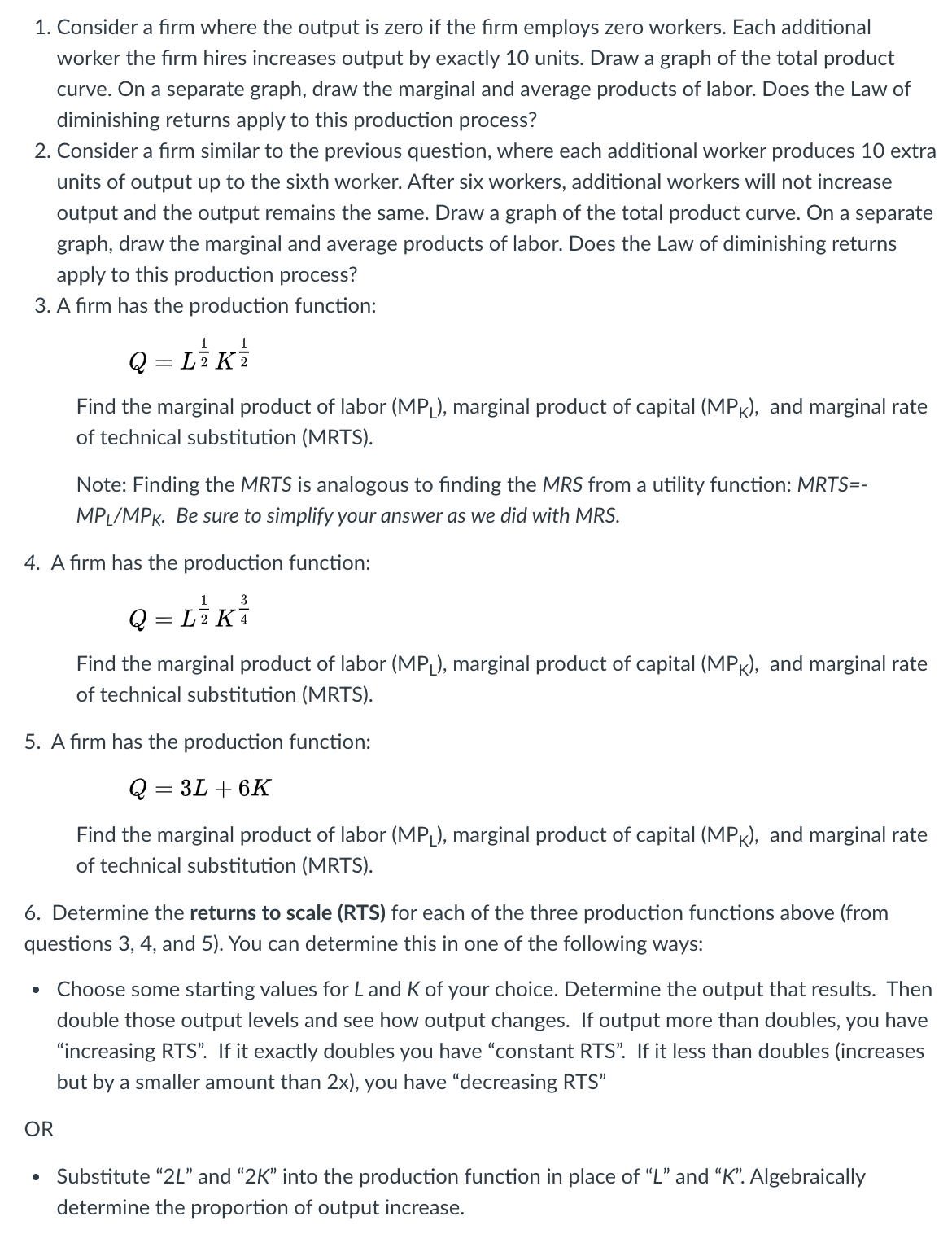How do I solve this question?
1. Consider a rm where the output is zero if the rm employs zero workers. Each additional worker the rm hires increases output by exactly 10 units. Draw a graph of the total product curve. On a separate graph, draw the marginal and average products of labor. Does the Law of diminishing returns apply to this production process? 2. Consider a rm similar to the previous question. where each additional worker produces 10 extra units of output up to the sixth worker. After six workers, additional workers will not increase output and the output remains the same. Draw a graph of the total product curve. On a separate graph, draw the marginal and average products of labor. Does the Law of diminishing returns apply to this production process? 3. A rm has the production function: Q=L%K% Find the marginal product of labor (MPLJ, marginal product of capital (MPK), and marginal rate of technical substitution (M RTS). Note: Finding the MRTS is analogous to nding the MRS from a utility function: MRTS=- MPL/MPK. Be sure to simplify your answer as we did with MRS. 4. A rm has the production function: i 2 Q 2 L2 K4 Find the marginal product of labor (MPLJ, marginal product of capital (MPK), and marginal rate of technical substitution (M RTS). S. Arm has the production function: Q = 3L + 6K Find the marginal product of labor (MPLJ. marginal product of capital (MPK), and marginal rate of technical substitution (M RTS). 6. Determine the returns to scale (RTS) for each of the three production functions above (from questions 3, 4, and 5). You can determine this in one of the following ways: 0 Choose some starting values for l. and K of your choice. Determine the output that results. Then double those output levels and see how output changes. If output more than doubles, you have "increasing RTS". If it exactly doubles you have "constant RTS\". If it less than doubles (increases but by a smaller amount than 2x), you have \"decreasing RTS\" OR 0 Substitute \"2i.\" and \"2K" into the production function in place of \"l.\" and \"K". Algebraically determine the proportion of output increase







